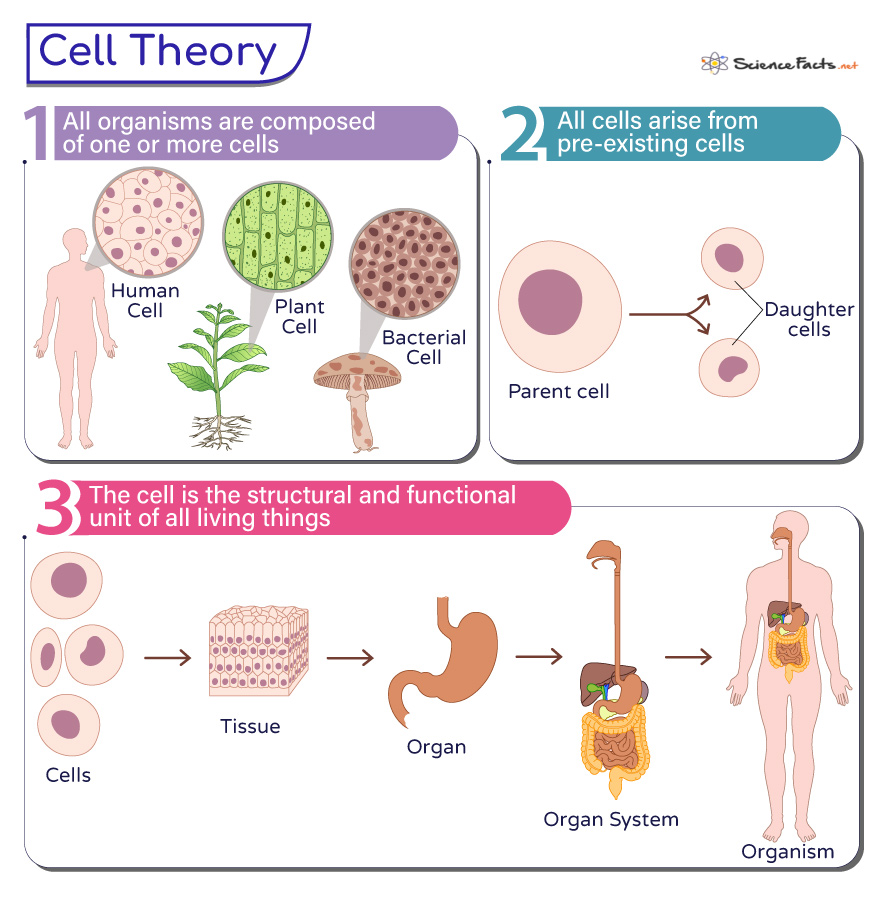Madi
Cell Theory!

Cell theory is:
- All living things are made up of one or more cells.
- Cells are the building blocks of all living things.
- All life on earth is related and we can trace all cells that have ever existed to one cell.
There are many people who contributed to Cell Theory and helped come up with the three ‘rules’ or components that make up the Cell theory. These people are;
| Person | Discovery |
|---|---|
| Robert Hooke | First to discover cells by looking at a tree cork. |
| Anthony van Leeuwenhoek | First to observe live protists from lakes, and bacteria from his plaque on his teeth. |
| Matthias Schleiden | Found out all plants are made up of cells. He also worked with Theodor Schwann and used discoveries made by past scientists to come up with the first two parts of cell theory! |
| Theodor Schwann | Found out all animals are made of cells and, as mentioned above, helped make the first two parts of cell theory. |
Where do cells come from? Spontaneous Generation? NO.
The third part of Cell Theory has come from disproving Spontaneous Generation. The concept of spontaneous generation is the belief that organisms can kind of just appear from non-living things or into existence.
Many people believed that dirt and water created worms and hay and barns created mice. We may now think that this is ridiculous, but for what knowledge of science they had in those times, what else could it be?
Spontaneous Generation was disproven with Francesco Redi’s experiment in 1668. He placed three jars of meat in the same place. One had no covering on the top, one had a cork on the top, and the last one had a cheese cloth on the top. many people thought that raw meat created maggots. With present day research we can conclude that the flys would see the meat and lay eggs on it for their maggots to have food, right? So after a few days of the experiment, the uncovered meat had many maggots, the cork covered meat had no maggots, and the cheesecloth covered meat had maggots only on the top because the flys had smelled the meat, but none inside.
Lots of people thought that the maggots wouldnt appear due to lack of oxygen, so in 1859, a man named Louis Pasteur disproved Spontaneous Generation fully. He had a flask with a very tiny opening, enough to let air in, but too small and weirdly shaped for bacteria to get into the liquid, aka chicken broth.
 The little dip at the opening would trap the bacteria there so the broth would remain untouched.
The little dip at the opening would trap the bacteria there so the broth would remain untouched.
For many days the broth stayed fresh, but after breaking the flask the broth spoiled after a few days with the bacteria being able to reach it.